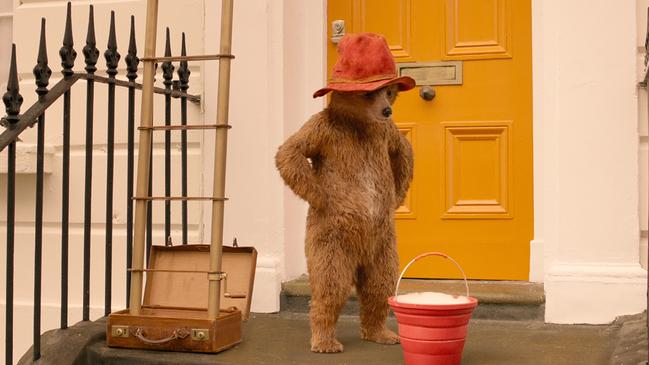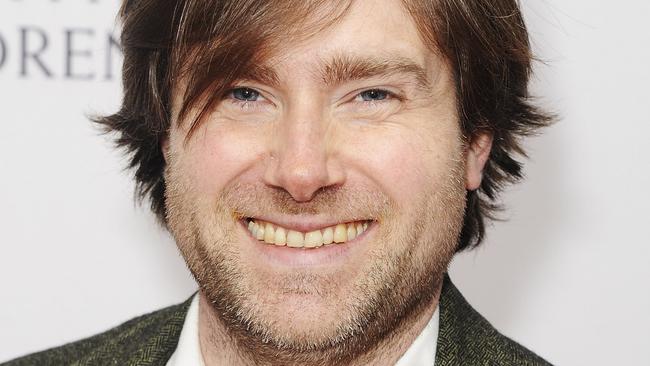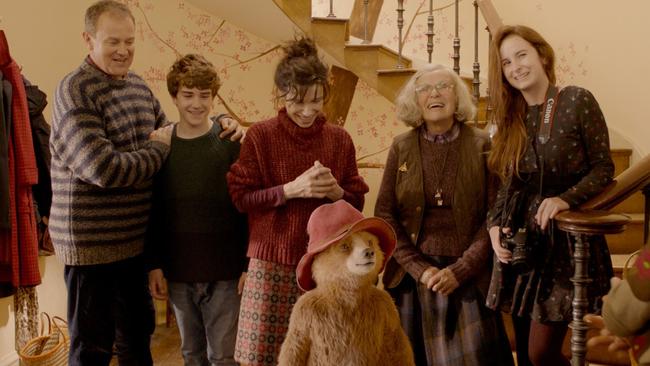Paddington 2: paws for thought as bear from Darkest Peru back onscreen
Paddington Bear is no stranger to London but, inevitably, things still hilariously go awry as he faces life in the city.

It’s been almost 60 years since a small talking bear left Darkest Peru and ended up in a London railway station. Michael Bond’s Paddington Bear, hero of more than 150 children’s books and assorted TV series, is now a big-screen star with a hit movie, and a sequel about to be released.
Paul King, who directed and co-wrote Paddington, the first, highly successful film, is well aware of the pitfalls of the follow-up. It’s important not to repeat yourself, he says, but also not to lose touch with what makes the characters who they are.
So we have, once again, the polite, good-natured Paddington Bear (voiced by Ben Whishaw), who left his Great-Aunt Lucy in Darkest Peru to live with the Brown family in a house in London. The books build drama out of the quotidian, exploring the small-scale misadventures of a bear who has the best of intentions, a figure equally drawn to sticky situations and marmalade sandwiches.
The films embrace these elements within a more dramatic narrative framework. Finding the right kind of physical comedy for Paddington can be a challenge, King says. “Slapstick is tricky because it can so quickly get irritating.”
The point about Paddington is that “he’s quite dexterous, but he’s a fish out of water”.

Having lived in London for a while, he has become more adept at negotiating the urban world, but when he tries things for the first time — in Paddington 2 this includes working in a barber’s shop and washing windows — things inevitably will hilariously go awry.
Silent cinema is a reference point for King, sometimes quite explicitly — there’s an escape scene in the movie that’s a tip of the hat to Chaplin’s Modern Times — and more generally in the nature of the physical comedy of the central character. Paddington, says King “is a great clown, and great clowns think fast, they’re quick on their feet, they stay one step ahead when things go wrong”.
CGI Paddington is convincingly brought to life — King is quick to give credit to a creative team that includes special effects company Framestore — but Paddington’s voice is also important. He wrote with Whishaw in mind, he says: “You know that Ben can sell certain lines or make something that’s very small feel very emotional and true in a way that not everyone can.”

In both movies, there’s a villain. In the first film the threat came from Millicent Clyde, a taxidermist determined to add a bear to her collection, played with chilling menace by Nicole Kidman. “She was deliciously evil and menacing and perfect,” King says, but they were keen to find a different angle in the new movie.
In Paddington 2, there’s an elaborate plot involving theft and misdirection: this time the antagonist is a local celebrity, actor Phoenix Buchanan (Hugh Grant), a thespian brimming with self-regard who no longer enjoys the success he thinks is still his due and schemes to recover past glory.

The Brown family has its own narratives in play. Henry Brown (Hugh Bonneville) is having a work-related midlife crisis; Mary Brown (Sally Hawkins) is training to swim the English Channel; and Jonathan and Judy (Samuel Joslin and Madeleine Harris) have new interests in their lives.
Believable change is necessary for the storytelling, King says. “And you can’t avoid this with the children, when they go from the age of 12 to 14. You have to accept those changes and work with them, it’s like a mini-Boyhood.”
Paddington 2 begins with another angle on Paddington’s origins story, a flashback to Peru, to the figure of Great-Aunt Lucy, her part in his life and the significance of London for her. This relationship, says King, is an emotional throughline in the film.
“It’s not like Great-Aunt Lucy doesn’t exist or his past has suddenly evaporated. Paddington is a complex, modern migrant figure as well as a fun-loving talking animal.”
The London in which the film is set is still “slightly timeless”. It’s a modern, diverse city, but there’s little that’s evidently hi-tech about it. The movie is a contemporary take on the stories, but King says it’s important that it doesn’t give us a figure brought up to date in a jarring fashion. Readers who grew up with the books in the 1960s and 70s “shouldn’t feel that there are things that are completely alien to them. If Paddington sat down and fired up iTunes and started streaming, it would feel a bit wrong somehow.”
There is, of course, a scene involving one of Paddington’s most potent weapons: the “hard stare”, a reproachful gaze that can stop people in their tracks. This time, King says, it came quite late in the scriptwriting process.

In the first movie, they filmed a scene that demonstrated the limitations of the hard stare. It only works on people who have an essential sense of decency, even if this quality is buried deep: it wouldn’t affect an irredeemable figure such as Kidman’s ruthless Millicent. In the scene with her, King recalls, “when Paddington tried it on her, she said, ‘Stare all you like, bear, it won’t work on me.’ It was a sort of terrifying removal of his superpower.” Unfortunately, it didn’t make the final cut of the movie.
There are certainly plans for more movies, King says, if the second one succeeds.
“The hope is that there’ll always be Paddington films. He doesn’t feel like a character with a story that has an end. It’s not like making Raging Bull 2: He’s Back.”
Paddington 2 opens nationally on December 21, with advance screenings this weekend and on December 16-17.



To join the conversation, please log in. Don't have an account? Register
Join the conversation, you are commenting as Logout